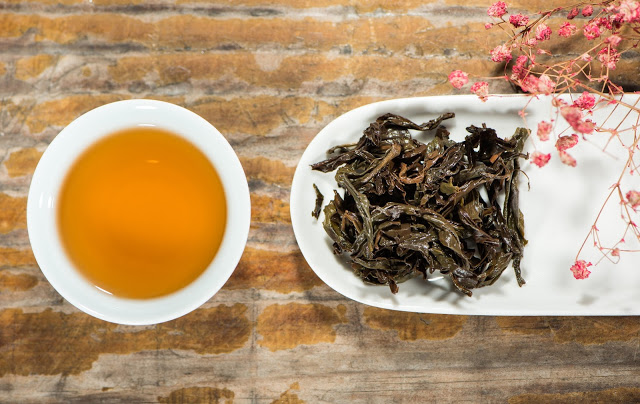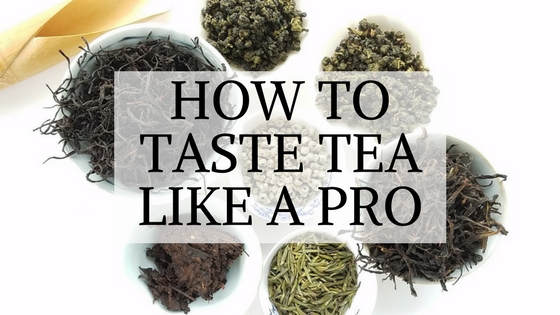I often get emails from people who tell me that they enjoy reading my tea reviews but they could never truly appreciate tea themselves. That simply isn’t true. Being able to evaluate what you are tasting is a learned skill. While some people might be born “supertasters”, the vast majority of us need to put in the work to train our palates.
This is a lesson that I learned many moons ago while working in customer service for a wine retailer. I love white wine but really struggled when it came to reds. I was a total newbie and because of that, my palate had not been trained in the same way as my professional colleagues who had studied for years.
Even if you’ve never had a particular type of tea before, a lot can be determined just by relying on your senses. Take detailed notes and trust your instincts. This is the method that I usually use whenever I taste tea.
Step 1 – Look at the Dry Leaves
Before you taste anything, you’ll want to thoroughly check out the appearance of your tea. What do the leaves look like? Are they broken or mostly whole? Do you see a lot of tender buds?
Step 2 – Aroma of the Dry Leaves
Can you detect any aromas from the dry leaves? This part is often the hardest. Try pre-heating a gaiwan (or another brewing vessel) with hot water and then pour the water out. Add your leaves and give it a few gentle shakes. The heat helps to release the aromatic compounds in the tea.
Step 3 – Brew the Tea
It’s important to follow the directions that the vendor provided, especially when you are just starting out. If you don’t have directions to go off of, try looking up a similar tea online to get a baseline for where your parameters should be. Don’t forget to give the wet leaves a whiff too.

Step 4 – Observe the Liquor
What does the brewed tea look like? What color is it? Is it clear or muddy in appearance? Are there any aromas apparent? Do they echo the dry leaf or did something new pop up? Using an aroma cup can help to focus your senses if you’re having difficulty with this step.
Step 5 – Taste the Tea
At long last, you get to taste the tea. Don’t forget to slurp! It might feel a bit rude but slurping actually makes you a more effective taster by getting the tea to every part of your mouth. Swish the tea around a bit in your mouth as well. Professional tasters spit out their tea but that is because they are tasting hundreds of samples at a time.
First, you’ll want to focus on the mouthfeel. Does the tea feel thin or is it thick and syrupy? Are you feeling the puckering sensation that is caused by astringency?
The taste of tea can be quite complex. Some aromas will hit you right away while others might linger in the finish. Breath out across your tongue after your sip can help it easier to pick up those ending flavor notes. How does the tea make you feel? Do you feel grounded or does the sheng puerh you had make you feel tea drunk? That might seem a bit hippy-dippy but how tea makes us feel is an important part of the experience.
It’s most important to remember that there is no wrong answer to what you might taste in a tea. We all experience things differently. One person’s fresh grass clippings is another person’s timothy hay. Give tasting tea with friends a try. It’s fascinating to share notes and see what others experience when drinking the same tea.
Did you find tasting tea intimidating when you first got into this hobby? I’d love to hear about any tips or tricks that helped you find your way in the comments below!

Nicole, as usually this was a very informative article. It's interesting to know a little better what goes into your thoughtful tea reviews. We don't do a lot of reviews over at Tea Perspective, frankly largely due to the fact that there are so many people who already "have it covered" so in-depth, such as yourself, who are reviewing teas in such an excellent way. If you'd ever like to have us feature a review of yours, please get in touch. I'm long overdue to subscribe to your blog as well, will look forward to future posts and catching up with older ones 🙂
Regards,
Jay from TP
Thanks for these tips I will apply them when I will test my new tea.
Amazing article and spot on. Yes, for me tea was intimidating at 1st because I could not believe such a tiny plant packed so much personality. So many flavors, smells, colors and the history of each tea. To overcome the sea of teas flavors, I ran across an tea article years ago and the writer just plain put it out there 'to understand tea one must drink tea'. Simple and to the point, but very true. Your palate will lead the way and in my case over the years, Ive become a Oolong teahead. I like the smell,color and flavors associated with Oolongs. Appreciating tea is actually easier than one perceives. Today there are so many flavors and varieties one can enjoy a bouquet of options. Following a method like (1-5) in the article, you can steer through the sea of teas to your own tea experience and happiness.